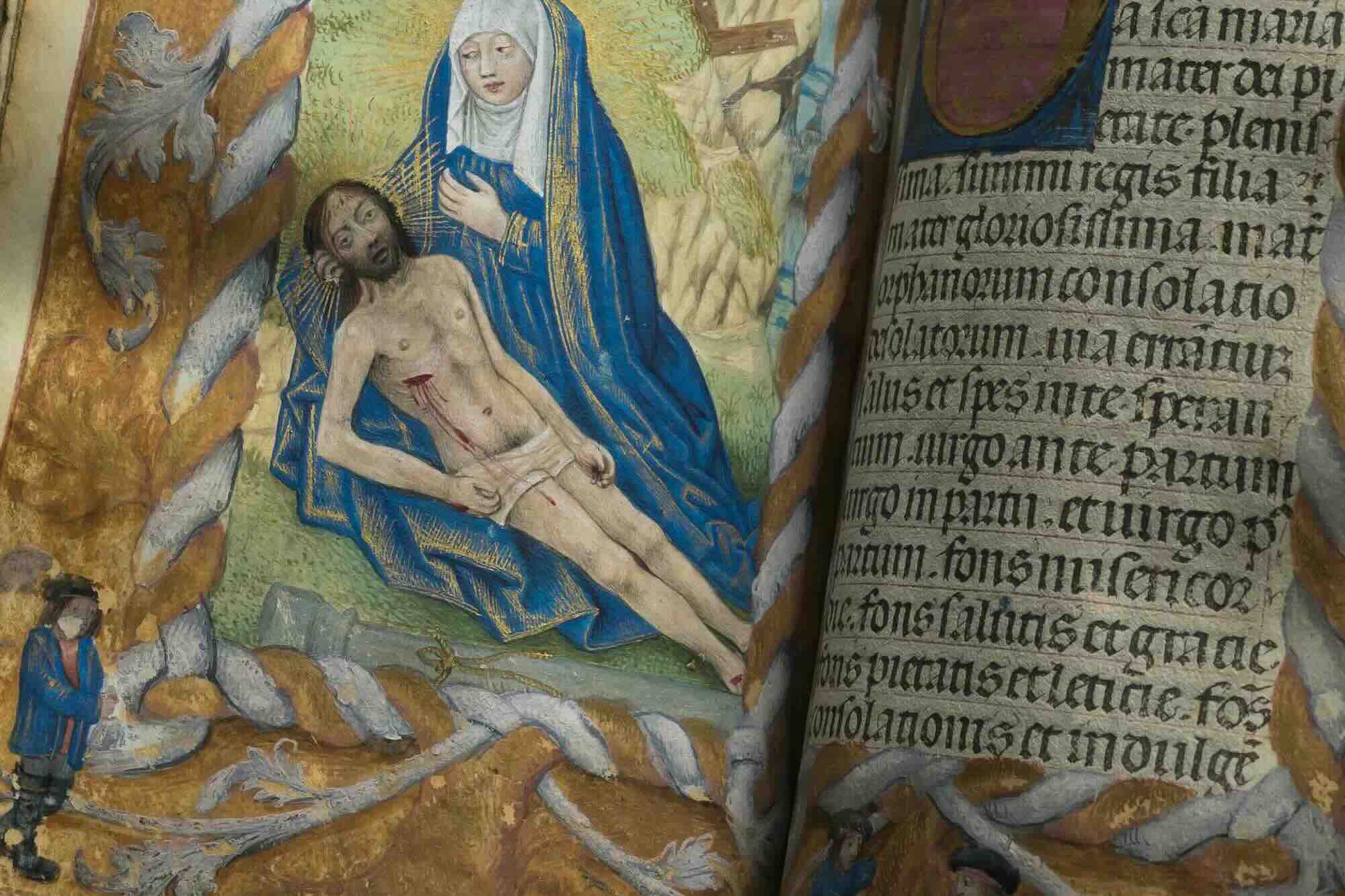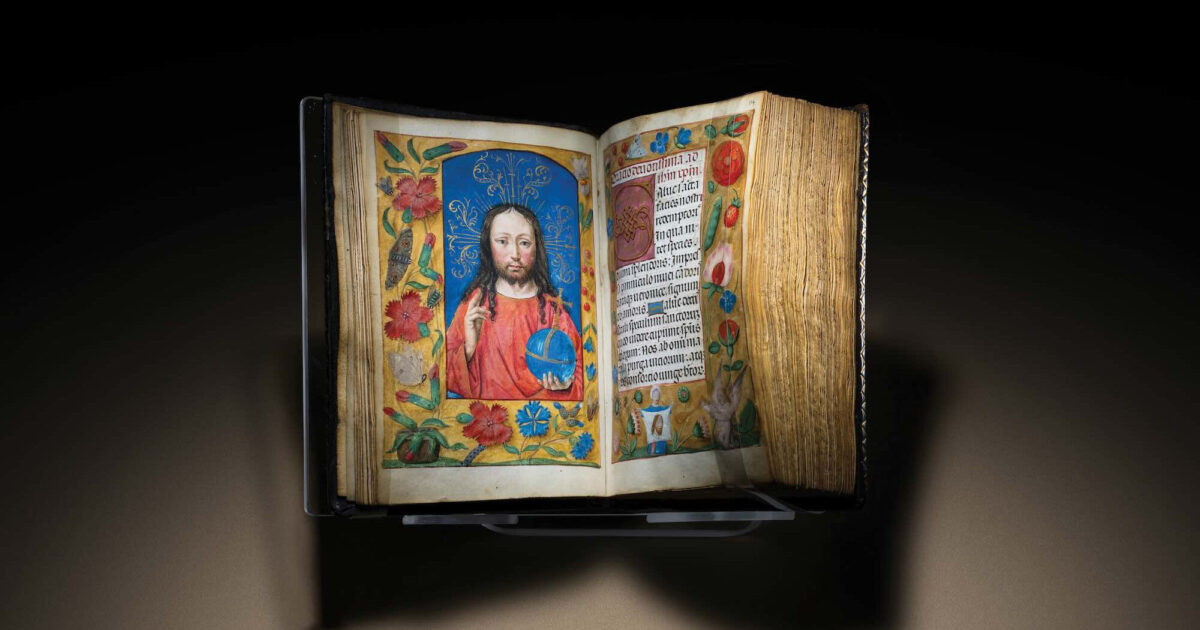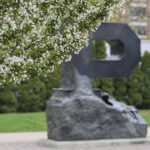Turning time’s pages
A collaborative acquisition of the medieval Ghent-Bruges Book of Hours offers unique opportunities for research, teaching, and community outreach.
On January 30, the hottest book at the University wasn’t a national bestseller or a novel adapted into a blockbuster film—it was a 500-year-old Catholic prayer book.
On that evening, a sold-out crowd of nearly 300 people packed into the Memorial Art Gallery’s auditorium to hear Nancy Norwood, the museum’s curator of European Art, and Anna Siebach-Larsen, director of the Rossell Hope Robbins Library and Koller-Collins Center for English Studies, discuss the recent acquisition of the pocket-sized Ghent-Bruges Book of Hours.
Filled with richly colored illustrations and Latin calligraphic script, the volume, produced around 1500, serves as a window into another time. “It was used by everyday people of the time who wanted to bring practices of worship into their daily lives,” says Siebach-Larsen. The 456-page book contains prayers, readings, and even a perpetual calendar (meaning that it could be used year after year).
What is a book of hours?
The name is descriptive: A book of hours was designed to help its readers structure time for prayer, while “Ghent-Bruges” refers to the distinctive, detailed style of manuscript illumination found in the two named Belgian cities.
The manuscript was a hit with the evening’s audiences and continues to be on display at the Memorial Art Gallery to the public. It will also serve as a cornerstone of the University’s renowned medieval studies program and collection.

Norwood sees an even more expansive role for the document in the years ahead. “This is an acquisition that will benefit multiple departments—visual studies, religious studies, art history,” she says. “It’s one tiny book, but it consolidates so many different things and extends into all sorts of fields.” Because many of the prayers included in the book were chanted, even faculty from the Eastman School of Music have expressed interest in integrating it into their teaching and research.
And while complete imaging by Lisa Wright, a digitization specialist for the River Campus Libraries, will allow for wide access to the book, the value of having the real object is significant. For example, the binding offers clues to how the book was made, the wear on specific images and pages suggests the ways it might have been used, and decorative gilt shines in a way that digital imaging can’t fully capture.
Siebach-Larsen says that there’s something emotional—almost visceral—about having a physical object that many people find meaningful. “There’s something about seeing an object in front of you that allows you to connect with the past in a unique way,” she says. “This book is beautiful, and, at the same time, many of the images are strange to us. But it’s not ‘distant.’ It’s right there in front of you.”

The acquisition marks a significant partnership between the museum and the River Campus Libraries. By pooling their resources and working together, the two University units were not only able to acquire a manuscript that would have been out of reach for either individually but also to ensure that it would be available for their respective events, programs, research, and teaching. “This collaborative aspect has been an area of emphasis for us, and it aligns with the ‘One University’ model that we’re pursuing,” says Siebach-Larsen, adding that the Book of Hours acquisition process could serve as a roadmap for future collaborative efforts at Rochester.
In the meantime, the book functions as both a scholarly reference and a source of fascination, bridging the gaps between teaching, scholarship, and public engagement. It is something that will be studied, admired, puzzled over, and, perhaps most importantly of all, experienced for years to come.
A version of this story appears in the spring 2025 issue of Rochester Review, the magazine of the University of Rochester.













